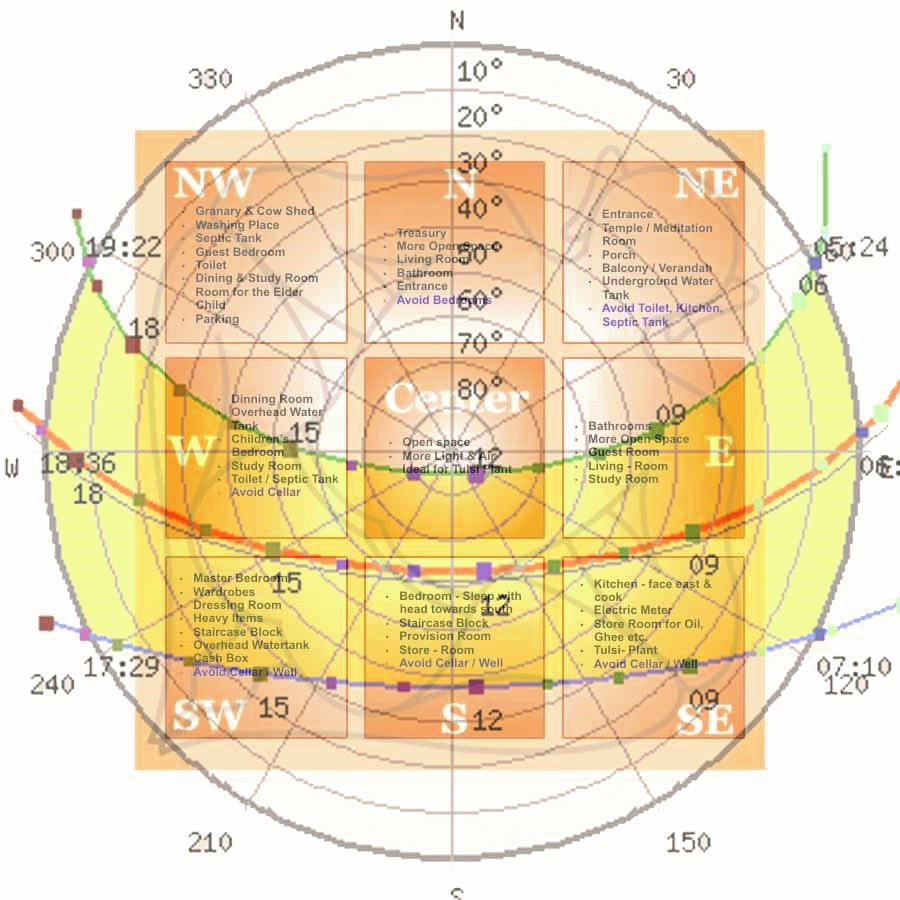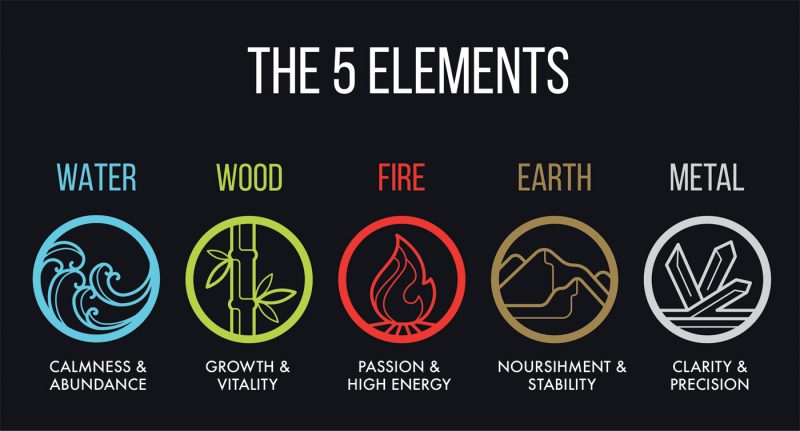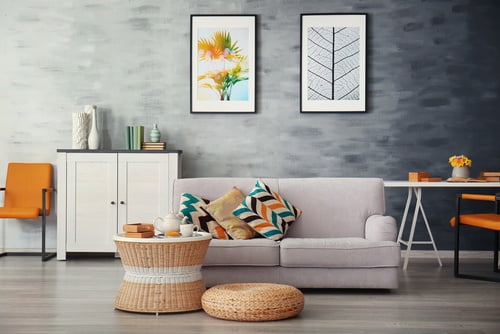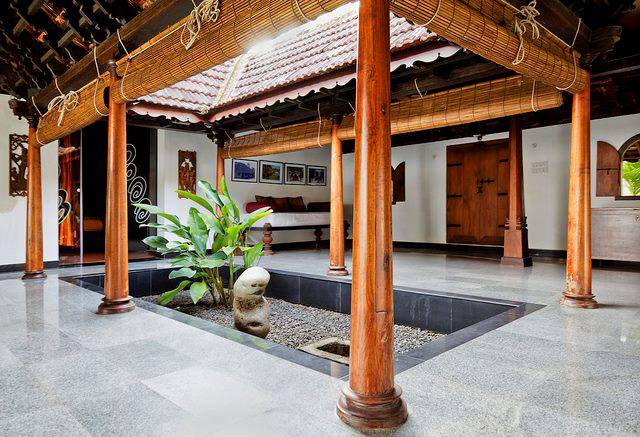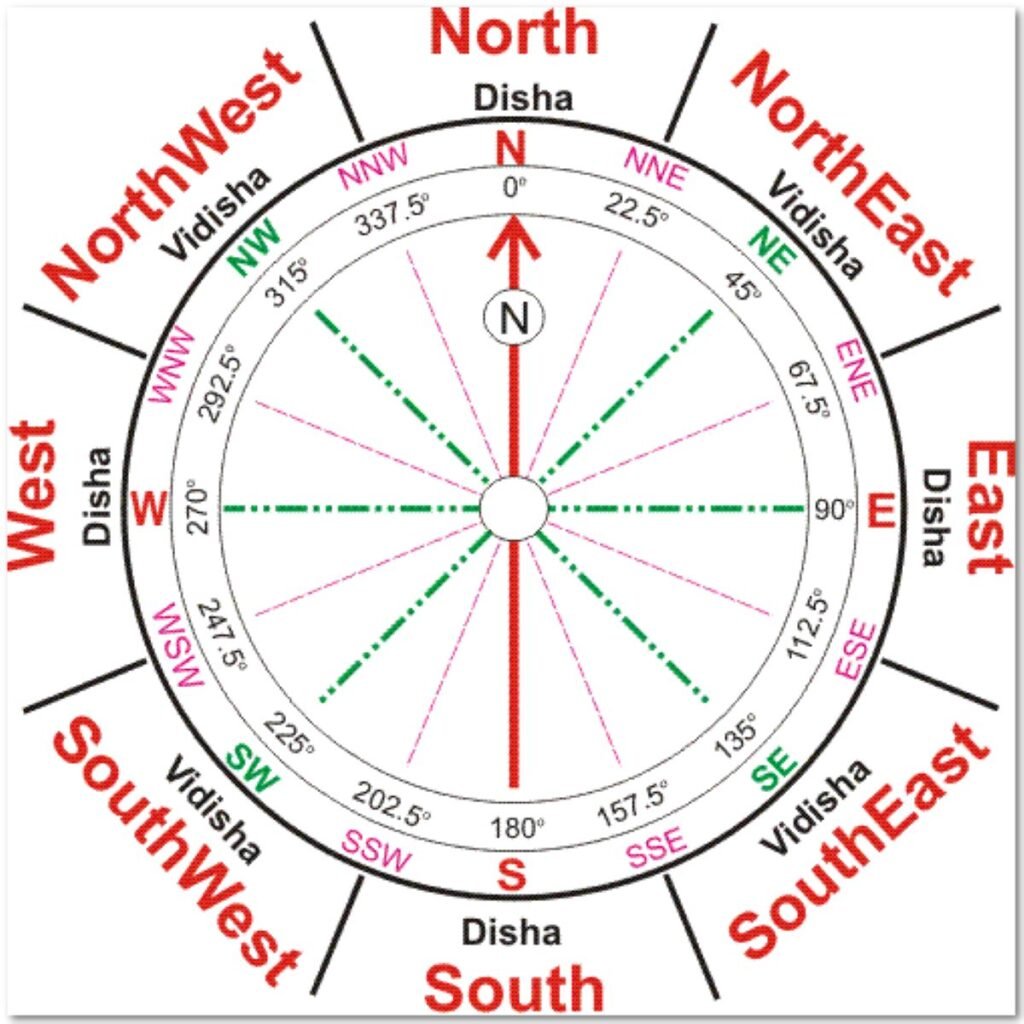Vastu Shastra establishes the principles of design, measurement, land preparation, layout, spatial arrangement, and spatial geometry of houses or any building structure; sometimes combined with traditional Hindu (or even Buddhist) religious beliefs. Vastu theory provides the harmony between living space and nature. The concept of Vastu Shastra is the organization of spaces and forms in a room or a group of rooms or structures, based on their functions connected with each other, and their purpose and use.
Table of Contents
History
Origin of Vastu Shastra
The origin of Vastu Shastra in India. Vastu Shastra originated from Sthapatya Veda, which is part of Atharva Veda. This science was limited to architects in ancient times, called Sthapathis, and was transmitted orally or in handwritten monographs. Vastu Shastra is also mentioned in our ancient scriptures, such as Mahabharata and Ramayana. The Setu Bridge built by Lord Ram is based on the Vastu principle. The Harappa and Mohenjodaro excavations also showed that Vastu Shastra had an impact on the Indus Valley civilization.
Importance of Sun path
The first principles were written according to the rays of the sun and their different positions in different periods. Vastu Shastra considered the change of sunlight intensity in different places, from sunrise to sunset, and between seasons in the architectural design.
Relation with Human body
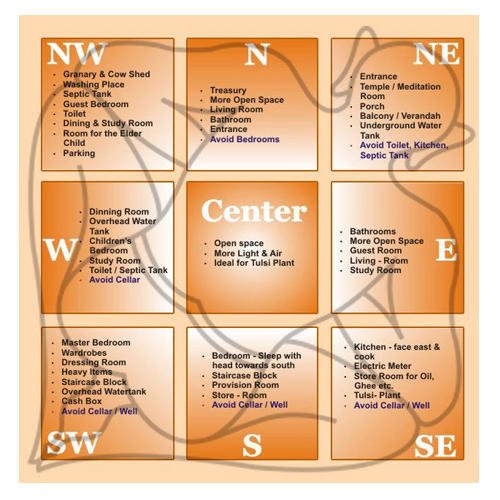
- The Vastu Purusha Mandala, reflects how Vastu Purusha was fixed down by Brahma and 44 gods. The head faces northeast and feet face southwest.
- The graph is divided into 9×9 = 81 parts. It shows the positions of the 45 gods (32 in the outer circle and 13 in the inner circle) holding Vastu Purusha. These symbolic gods control all aspects of life and have certain internal qualities.
- The functions of the rooms located in each area of the house are determined by the nature of the god who manages that particular area.
Panchbhutas(Five elements)
The Earth
Earth is the first element of Vastu Shastra. Because Earth has gravity and magnetic quality, it affects human life.
Water
Water or Jal is considered the second most important factor in Vastu after Earth. However, water is one of the most important elements of our body and two-third of the earth’s surface is composed of water.
Fire
After Earth and Water, Fire or Agni is Vastu’s most important factor. Fire is connected to the sun, which is known for its vitality and strength. The sun is a source of natural light and an important source of energy.
Air
Air or Vayu is an important factor of nature without which all life reaches at the end. The air element is related to our touch and solid sense. This element has an appropriate direction in Vastu in the direction of the northwest. Air contains several gases on Earth, which are essential for human lives, such as oxygen, nitrogen, hydrogen, and carbon dioxide.
Space
There is no limit to spaces or Akash. This element is related to our auditory sense. Space is full of galaxies, stars, sun, moon, constellation, and all nine planets. The space affects human life and Vastu, providing adequate guidelines for space, which is that the construction of the house is to bring the light to the center of the house.
Nava-Dikpala(Cardinal Directions)
East (Purva): This direction is governed by Lord Indra, who is called the King of the Gods. It grants wealth and joy of living.
SouthEast (Angneya): This direction is ruled by Agni, Lord of Fire. He gave us a good personality and all the good things in life. Fire is a source of health because it is related to fire, cooking, and food.
South (Dakshin): This direction is the death god Yama. He is the embodiment of Dharma, eliminating evil and blessing. It is a source of wealth and happiness.
SouthWest (Nairutyaa): This direction is led by the god Niruti who protects us from evil enemies. It is the source of cases of character, behavior, longevity, and death.
West (Paschima): This address is commanded by Lord Varun, Lord of Rain. He bestows his blessings in the form of natural rain, which brings prosperity and joy to life.
NorthWest (Wayavya): This place is commanded by Lord Vayu, who brings us health, strength, and longevity. It is the source of change in the course of business, friendship, and hostility.
North (Uttara): This direction is controlled by the God of Kuber.
NorthEast (lshaanya): This place is overseen by Lord Eeshaan and is the source of wealth, health, and success. It brings us wisdom and knowledge, freeing us from all suffering and misfortune.
Maharishi Vastu Architecture
Maharishi Vastu architecture uses Vedic principles to ensure that the building has a positive impact on its occupants. They are as follows:
- Correct direction
- Correct room arrangement:
- Right Proportion
- Non-toxic natural materials and solar energy
- Maharishi Vastu also considered other important influencing factors, such as:
- The slope of the earth
- The shape of the earth
- The unobstructed sun
- The impact on the environment, including bodies of water
- auspicious hours
Materials
When building a new house, only new bricks, wood, and materials should be used. Artificial materials like plastics and asbestos are unacceptable building materials. The reason is that inorganic materials are not considered adequate conductors of cosmic energy. Old building materials should not be used to construct new buildings. Otherwise, those old materials can repeat the negative events that happened in the old house. Using old things in new buildings can lead to loss of wealth.
- High-quality soil and cement should be used.
- To live in a healthy home, you need to build your home with natural, non-toxic materials.
- Wood from thorn trees should not be used because it will have a negative effect.
- You should also not use materials that have been stored for a long time.
- The iron frame should only be used when necessary.
- Wood is more magnetic under the action of the energy of the earth, which makes the building more dynamic.
Top of Form
Bottom of Form
Feng Shui
The philosophy of Feng Shui is to organize the living space to create a balance with the natural world. The goal is to use energy power and establish harmony between the individual and his environment.
Origin
Feng Shui is composed of two Chinese words, Feng and Shui which mean wind and water respectively. This idea is taken from an ancient poem, which defines that human life is connected with the surrounding environment.
The Feng Shui Bagua Map
Bagua is a Chinese word that means eight areas. Each of these eight areas is related to a different living environment, such as family, wealth, or career. Each of these areas has corresponding shapes, colors, seasons, numbers, and earth elements.
The Five Elements
The five elements, earth, metal, water, wood, and fire, come from the Taoist traditions. These elements are five interrelated stages of life and work together to create a complete system. Under normal circumstances, feng shui practice can balance these five aspects of your home and each of your life areas or Bagua.
Difference between Vastu shastra and Feng Shui
Vastu Shastra and Feng Shui are ancient sciences and have a common purpose that is to harmonize energy with the environment. Vastu Shastra originated in India; Feng Shui is an ancient Chinese philosophy that balances the forces of the universe in architectural space.
In Feng Shui, the main elements that must be coordinated in the architectural space are water, wood, fire, gold, and earth. In Vastu Shastra, “wood” and “metal” are replaced by air and space respectively. The process of balancing the above-mentioned main elements and using treatment/remedial measures in a specific area of a building or living space is different for both sciences.
Vastu in Homes
Buying a plot/house
The external environment and surrounding environment of the house may have a significant impact on the proprietor’s providence. Therefore, it is important to lay a solid foundation by choosing the right location with open space in a pleasant green environment, as this will promote peace, good health, good luck, and positivity when you enter your new home.
- The bungalow or villa is directly connected to the surface of the land, so the land should be chosen wisely.
- Compared with apartment owners, independent owners are more likely to build houses that meet Vastu standards.
- According to Vastu Shastra, the shape of your house should never have an irregular design, because irregular shapes will attract negative emotions. Therefore, when building a new house, always choose the asymmetric design because it will bring prosperity, peace, and health.
- In Vastu Shastra, it is believed that the spiral staircase attracts negative energy, therefore the staircase must always be straight to attract positive energy.
Main Entrance
The front door is like an opening through which any energy can enter your home; therefore, the entrance to the house must always be in a favorable direction.
- The front door should open in a clockwise direction.
- Your front door exit should face east, north, or northeast to bring positivity, good luck, and prosperity.
- Avoid blocking obstacles in fronts, such as shoe racks, trash cans, or water-based decorations, as this will restrict positive energy from entering your home.
- Use high-quality wood to construct the front door
- The size of the front door should be large because it is considered a victory door to success, health, and good luck.
- Always make sure that the front door has bright lights because it will generate positive energy.
- Avoid painting the front door black, because black will attract negative energy, and use bright paint on the front door because it attracts positive energy.
- Avoid hanging antiques or animal faces on the front door, because it will bring boredom and doom.
Living Room
The living room is the center point of most family and social gatherings. Therefore, always keep it clean and make the living room look more spacious.
- According to Vastu, the living room should face north, northeast, east, or northwest.
- According to Vastu Shastra, heavy furniture should be placed on the southwest or west side, while electronic equipment should be placed on the southeast of the living room.
- The living room is considered the face of your home, so it is important to decorate it vigorously and ensure that all corners of the living room are well lit, because the corners are a powerful source of energy.
- Apply a mix of vibrant colors and earth in the living room to create a balanced atmosphere in the room.
- According to Vastu Shastra, the mirror in the living room should be placed in the north.
- Decorate the living room with a beautiful crystal chandelier, as it generates a large amount of light by attracting.
Drawing Room
- Never place rafters or beams on the ceiling in the living room, because sitting under it can cause confusion and stress.
- Paint the walls white or light green, to promote a sense of unity and affection between guests and residents.
- Window and door light curtains are used on the northeast wall of the living room, and thick curtains are used on the southwest wall of the living room.
- The northeast corner of the living room should be clean and tidy.
- Leave some space in the northeast corner of the room.
- To generate positive energy and enhance emotions, display paintings representing the beauty of nature or landscapes to add tranquility to the room.
- Hang a heavy chandelier on the south or west side of the room. Avoid hanging it in the exact center of the room(Brahmasthan).
- The guests must sit in the northwest of the room.
Bathroom
- Ideally, the bathroom can be placed in the east of the house.
- Drain pipes must be installed in the northeast area.
- Restrooms must be constructed on the west or northwest side of the building.
- The shower and bathroom faucet can be installed on the north wall which also fits the mirror.
- If the bathroom has an attached toilet, the toilet should be on the west or northwest side, a few inches off the ground.
- Geyser is best located in the southeast corner.
- The bathtub must be in the west and the sink can be in the northeast.
- There must be windows or ventilation equipment in the east or north.
- The bath must take the west side.
- Choose bright, soothing colors for your bathroom walls.
- The mirror should be placed on the east wall.
- If there is a closet, it should always be on the southwest side of the bathroom.
- The slope of the bathroom floor must be north and east for the water to flow to the northeast side of the bathroom.
Bedroom
A bedroom is a place where you want to spend exclusive quality time. Vastu Shastra has been used for many years to design a balanced and organized equation in the environment to absorb positive and progressive energy, which will have a significant impact on your health, wealth, and interpersonal relationships.
- According to Vastu Shastra, to achieve good health, prosperity, and strong bonds in your relationship, please make sure that the direction of the bedroom is southwest instead of northeast or southeast.
- Children’s rooms must not be located in the southwest, since it affects their health and education. Make sure that the room is not under the kitchen or bathroom, as it can cause illness.
- Always use neutral or earth colors to promote the tranquility and pleasure of the bedroom, and do not paint the bedroom walls dark or black.
- Make sure your bed faces southwest and your head faces west, but avoid sleeping under the rafters of the house.
- Avoid placing mirrors or any reflective objects in front of the bed as it will affect your sleep and negatively affect your relationships.
- The balcony should be built in the east or north of the house. The ideal location for the balcony is north and east, where there is constant sunlight from morning to night.
- The west and south sides are too hot to sit on, so they should be avoided.
Kitchen
The kitchen has a great impact on our health and interpersonal relationships because it contains the main energy resources of life’s food. Therefore, your kitchen should always radiate positivity through its decoration.
- According to Vastu Shastra’s advice, the kitchen windows should face north, northeast, or east.
- Apply bright colors to exude more positivity in the kitchen environment.
- A kitchen is a place made up of all the “Panchbhootas” earth, fire, water, air, and spirit.
- According to the advice of Vastu Shastra, Agni is the main source of energy for the kitchen, and Agni is prevalent in the southeast of any house; therefore, the kitchen should be located in the southeast of the house.
- If the kitchen is located in the north, northeast, or southwest, it will damage interpersonal relationships and can cause strong differences of opinion between family members.
- According to Vastu Shastra, facing to the east while cooking will transfer positive energy to the food, reflecting your health, happiness, and peace of mind.
- According to Vastu Shastra, all electrical kitchen appliances are strongly recommended to be placed in the southeast area of the kitchen.
- According to Vastu Shastra, do not place sinks or sinks parallel to or adjacent to kitchen appliances such as gas or microwave ovens. Because the nature of fire and water are different.
Pooja Room
Pooja rooms should always be located on the north, east, or northeast side of the house.
- When worshiping, look east/north.
- The height of the idol should not be greater than 9 and less than 2.
- Pooja rooms should not be built on the bedroom or wall adjacent to the bathroom wall.
Study Room
A study is a place where a person sits quietly and concentrates on studying. This room must be located in the correct location and direction, following the principles of Vastu.
- The study room should be located on the northeast/east or west side of the home.
- Students should face east/north when studying.
- When studying, the beam should not go over your head.
- The study room should be well lit, and you should not look up at the blank wall or window while studying.
- It is better not to have a toilet in the study room.
Guest Room
- The guest room should be built in the northwest of the house. It is a clear and suitable place for guests to stay at home. You can also plan to build south-facing guest rooms.
- The northeast door faces east; the northeast door faces north; the southeast door faces south and the northwest door faces west are the best options.
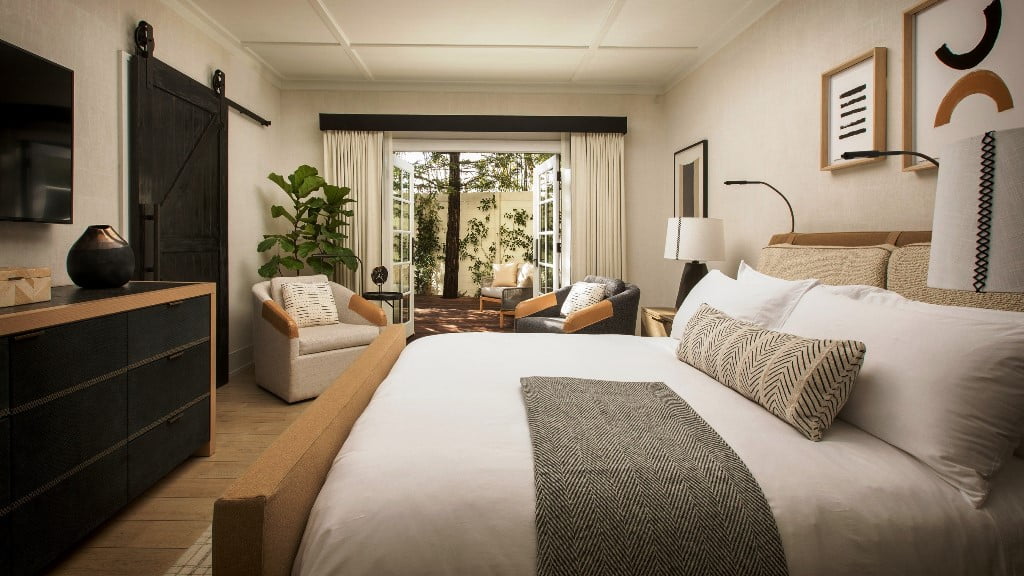
Storeroom
The storage room is a place to store garbage items, but the room should not increase garbage items. If it is put in the wrong place, the amount of garbage will increase or it may be permanent.
- The storage room should be located in the north western part of the home because it helps to provide good storage space and minimizes the possibility of grain shortage.
- The door to this room can be built in any direction except the southwest and should have two shutters.
- The window in this room should be to the east or west.
- The color selected in the warehouse must be white, yellow, or blue.
Courtyard
The courtyard is a good place to create a space for rest and relaxation.
- Depending on the house, the center of vastu shastra is the best location for the courtyard.
- The courtyard floor can be concrete, cobblestone or stone.
- Wood or cane furniture in a courtyard is advisable.
Modern Application of Vastu
Modern Indian architecture is based on our ancient architectural forms and practices, combining traditional techniques with modern technology. The application of Vastu Shastra is a Vedic science and construction technique, which has nothing to do with time, but eternal. The structural engineering and building techniques that were used by ancient architects are still used today, so the obsolescence or redundant problems of Vastu Shastra do not arise. It can be said that the Vedic classics of modern architecture are similar to ancient science, but the difference lies in the treatment of the concepts.


